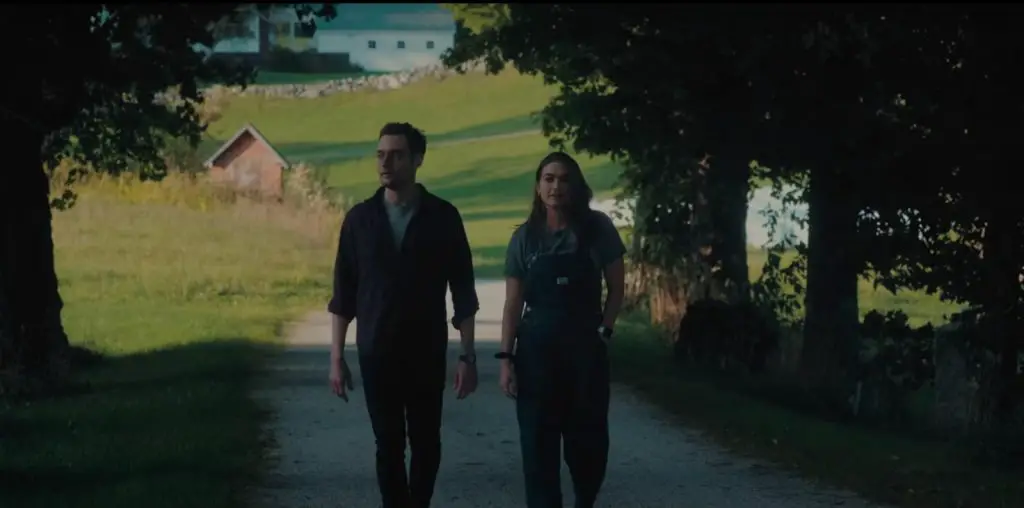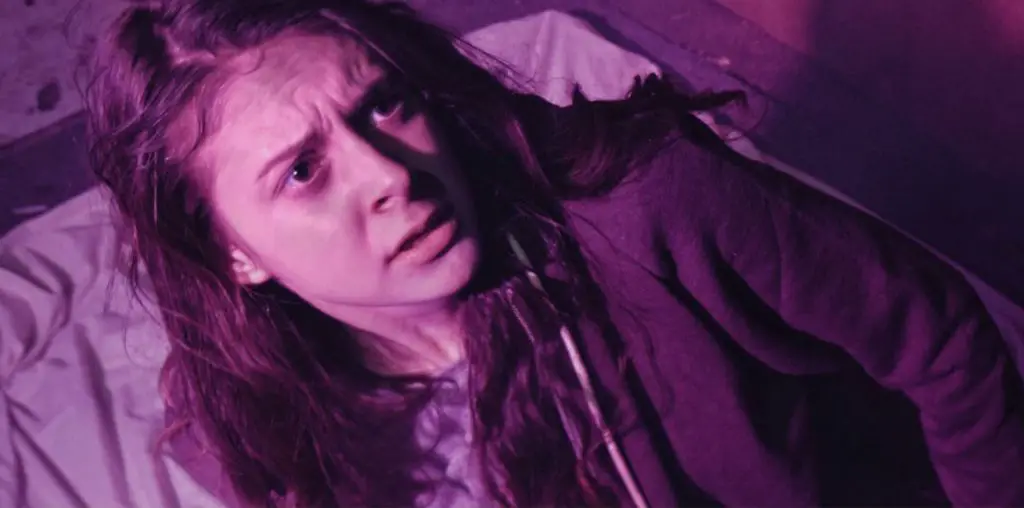
BOOTLEG FILES 279: “Days and Nights in the Forest” (1969 feature from India’s great director Satyjait Ray).
LAST SEEN: It is being shown this month as part of a Satyajit Ray retrospective in New York City.
AMERICAN HOME VIDEO: None.
REASON FOR BOOTLEG STATUS: The film has never been commercially available in the U.S. home entertainment market.
CHANCES OF SEEING A COMMERCIAL DVD RELEASE: Possible, but not in the near future.
I am a huge fan of the films of the great Indian director Satyajit Ray. Unfortunately, I cannot claim any degree of expertise in discussing his full canon, since the majority of his films are not easily available in the U.S. One film that I’ve eager to see for years was Ray’s 1969 “Days and Nights in the Forest.” Not unlike many hard-to-find flicks, this one did not quite live up to the giddy expectations raised by its elusiveness.
That is not to say “Days and Nights in the Forest” is a crummy film. Instead, it can be categorized as the type of work that is easy to admire but difficult to like – the intelligence and artistry of the production is evident in every frame, but the overall effect does not leave the viewer feeling emotionally satisfied with the experience.
“Days and Nights in the Forest” follows four young professionals who leave their work in urban Calcutta for a brief vacation in a rural area. Asim, the wealthiest and most self-confident, is the unofficial group leader. Hari, the macho sportsman, is trying to forget the nasty end to an affair with a girl who dumped him. Sekhar is the loud, silly joker of the bunch. Sanjoy, the bespectacled, timid intellectual, seems to be tagging along for the ride.
They arrive at a bungalow community and they claim a cottage for themselves without having sought out an advance reservation. Despite the pleas from the community’s manager that he could lose his job if the men remain, the quartet decide they will stay.
The village surrounding the bungalow doesn’t offer much in the way of distraction, and the men spend most of their days lying around and their evenings getting drunk at a local tavern. They discover an upper crust slice of Calcutta nearby: the summer home of a well-to-do widower. Asim is attracted to the old man’s daughter Aparna, but she is cordial yet coolly detached to the men. Sanjoy finds himself attracted to Jaya, Aparna’s widowed sister-in-law. Hari finds amusement with Duli, a local peasant who drinks too much and has a reputation for being a “bad” woman. Sekhar never finds any woman interested in him.
In the course of the story, the men find their attitudes challenged by their temporary surrounding. Asim is baffled by Aparna’s chilliness, yet he quietly and persistently chips at her icy demeanor. Sanjoy is unable to come to terms with Jaya’s personal tragedy – her husband killed himself. Hari’s crass attitude to Duli is pure lust, and a carnal rendezvous in the forest results in violence when he is ambushed and robbed by a local youth whom Hari had falsely accused of theft earlier in the trip. Sekhar, in orbit around the others, creates one social faux pas after another, yet he never quite figures out why his foot keeps finding a parking space in his mouth.
On the surface, “Days and Nights in the Forest” seems like a comedy of manners with a dark undertow. The Calcutta men come in various levels of boorishness, the Calcutta women are emotional extremes (Aparna’s distant aloofness and Jaya’s emotional neediness offer no middle ground), and the villagers are one-dimensional creatures living in excess (either they are heavily subservient or overstated in their indignation of the outsiders).
Furthermore, the film provides ample opportunity for Ray to offer examples of his mature and wise directing style. Shot in black-and-white, “Days and Nights” is visually stark and the characters fit chessboard positioning as they maneuver around each other from scene to scene. The film’s most emotionally elaborate sequence is also its most elementary in composition: the Calcutta men and women sit on a picnic blanket in a clearing in the woods and play “the memory game,” in which each person needs to recall the names of famous people cited in order by the other players. Ray’s camera never leaves the confines of the blanket as it goes from player to player, and the ensemble does a marvelous job in bringing a wealth of anxiety and drama from the deceptively simple game.
However, Ray is clearly not offering a film with characters for the audience to love. “Days and Nights” is obviously intended as a harsh statement of sorts. The men from Calcutta represent the ultimate bourgeois nightmare: throwing around money and arrogance, they talk among themselves of imported Scotch and Japanese radios while showing little concern about the poverty of the rural denizens whom they expect to serve their whims. The male and female Calcutta characters are considerably lighter skinned than the darker-toned rural denizens (the heavy dusky make-up on actress Simi Garewal, who plays Duli, looks like it came from an old-time minstrel show). The violent attack against Hari could be seen as comeuppance for his boorishness, but it can also be seen as a thinly veiled putdown of the brute savagery within non-sophisticated rural communities. And when the elder patriarch talks about how he never sees wild animals from his balcony anymore, it is fairly obvious his observation goes beyond mere zoological notions.
And that is where “Days and Nights in the Forest” left me disconnected. With this production, Ray is clearly trying to create a work of art – but it is art that is viewable only from a distance. You cannot embrace the film because it is frequently cold and sour. It is difficult to come away from its conclusion feeling satisfied. In fact, the characters in the film leave in the closing credits without giving the impression that they were improved for their adventures – it appears they are ready to go back to their Calcutta existence and put their rural interlude behind them. That, of course, makes the entire point of the film something of a time waster.
In creating “Days and Nights in the Forest,” Ray returned to dramatic narrative filmmaking following his 1968 musical comedy adventure “The Adventures of Goopy and Bagha,” which was highly popular in India but barely seen in the rest of the world. “Days and Nights in the Forest” brought Ray back to the global cinema scene – it was nominated for Best Picture at the 1970 Berlin Film Festival and had its U.S. premiere at the 1970 New York Film Festival. Howard Thompson of the New York Times found it “subtle, perceptive and serene. . . utterly charming” while Pauline Kael of the New Yorker called it “a major film by one of the great film artists.” However, the film did not receive a U.S. commercial theatrical release until 1973, and that was just a scant art house run that barely attracted audience attention.
“Days and Nights in the Forest” has never been commercially available in any U.S. home entertainment format. If it should turn up, the restoration of the 40-year-old film will probably be costly, since the original negative of the film was destroyed in a fire. Poor quality bootlegs have circulated for a number of years, although an adequate quality import from an Indian DVD label can be obtained via eBay.
I am glad that I got to see “Days and Nights in the Forest,” though I am disappointed that I didn’t care for the film. Hey, it happens.
IMPORTANT NOTICE: The unauthorized duplication and distribution of copyright-protected material, either for crass commercial purposes or profit-free s***s and giggles, is not something that the entertainment industry appreciates. On occasion, law enforcement personnel boost their arrest quotas by collaring cheery cinephiles engaged in such activities. So if you are going to copy and distribute bootleg videos and DVDs, a word to the wise: don’t get caught. Oddly, the purchase and ownership of bootleg videos is perfectly legal. Go figure!

